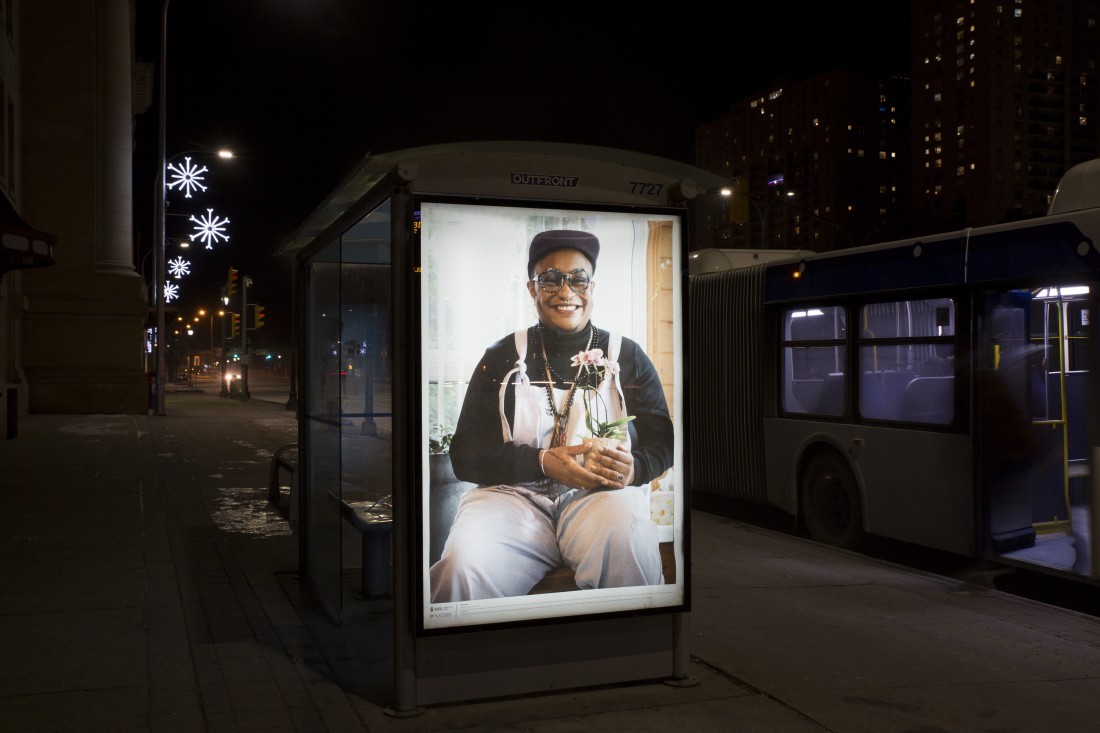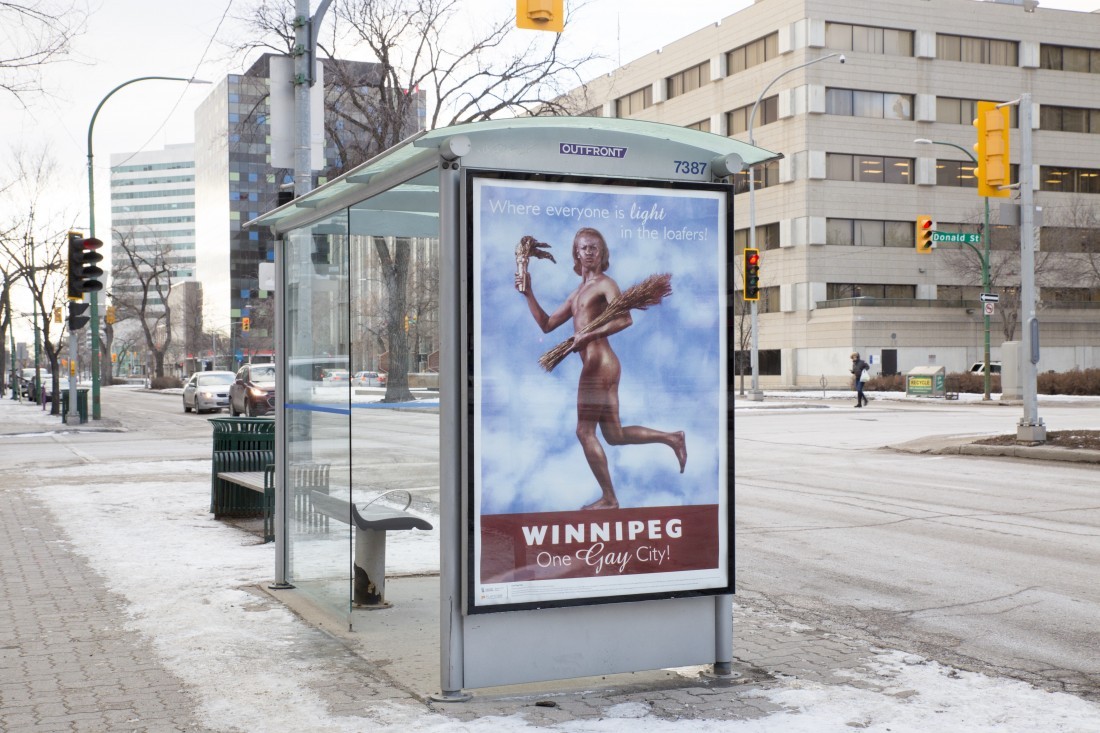“One Queer City”
Twenty-three years ago, renowned queer artists Lorri Millan and Shawna Dempsey created a mock advertising campaign that appropriated the civic slogan “Winnipeg: One Great City” and transmuted it into the rather more attention-grabbing “Winnipeg: One Gay City.” The activist message of the campaign, controversial at the time, was that acceptance of people with samesex sexual orientation would in fact make Winnipeg a great city, worthy of being considered a tourist attraction and ideal place to live. (“Where every child can grow up to be whoever they want to be!” announced one of the posters, representing a smiling, genderambiguous child wearing a tiara and pink fluffy dress.) Conceived as a response to widespread homophobia and violence against gay people in Winnipeg, as well as more specifically to Mayor Susan Thompson’s refusal to acknowledge Gay Pride Day, the campaign, intended to be exhibited in the advertising windows in bus shelters, ran into difficulties even before it could be realized. Provoking a public outcry, the project was eventually blocked by the advertising agency (a decision backed by the Canadian Advertising Standards Council), and so, in reality, worked to expose “One Great City” as “One Grim City.”
Much, of course, has changed since 1997. The Winnipeg queer community has grown in numbers and strength, and through the hard work of its members has become more visible, acknowledged and legally protected. The formation of queer identity has also significantly changed in nature, becoming more varied and also more mainstream. It is within this context that one encounters “One Queer City,” a recent public installation in Winnipeg, curated by Blair Fornwald, that revives and builds on Millan and Dempsey’s original project, mounting (finally!) the censored posters, along with Larry Glawson’s 1994 Homo Heaven and several newer works by other artists, in the city’s transit shelters. While the older works have a forward-looking, utopian feel, the newer works—by Jean Borbridge, Mahlet Cuff, Dayna Danger and Ally Gonzalo—focus on bringing forth the lived diversity of queer experience, representing, as the curator puts it, “a range of intersectional identities.”

Mahlet Cuff, At home, 2020, Main Street at Broadway. School of Art, University of Manitoba. Courtesy the School of Art Gallery.
Whereas Millan and Dempsey’s original project articulated queer people’s struggle to express their identity within a public space governed by restrictive heteronormative ideology, the new works face a different challenge, one rooted precisely in an apparent abundance of freedom. Today, society encourages us to construct our identities in a manner strongly linked to the endless array of possibilities afforded to us for consumption and production. Who you are, according to this logic, depends on the “content” you produce about yourself and make available for the consumption of others within the highly market-driven arena of social media. For me, this problematic, embodied by the exhibition of the show within spaces normally reserved for advertising rather than within a traditional gallery setting, constitutes the timely twist of the reboot.
Instead of representing a single campaign like “One Gay City,” the new works engage with the unique context of their exhibition in disparate ways. Mahlet Cuff’s At home consists of a casual portrait of a person, dressed in overalls, seated in a cozy indoor setting, smiling and holding an orchid. Involving no text and formally recalling traditional portraiture, the picture conveys a gentle intimacy that comes across as defying commercialization. By contrast, the pieces by Ally Gonzalo and Dayna Danger find a kind of liberatory potential in glossy, commercial aesthetics, which they playfully mimic. Gonzalo’s poster features three model-esque baklâs— subjects belonging to the traditionally acknowledged third gender in the Philippines—floatingly arranged around the centrally positioned words malakas (strong), matapang (brave), maganda (beautiful).

Shawna Dempsey and Lorri Millan, One Gay City, 1997/2020, Broadway at Donald Street. School of Art, University of Manitoba. Courtesy the School of Art Gallery.
In Jean Borbridge’s self-portrait, Cladding: the application of one material over the other to provide a skin or layer, Borbridge is draped in different layers of colour-coordinated fabrics, plastic sheets, strings, ropes and canvases, to the point that the body (especially the face) almost entirely disappears from sight. In an accompanying livestreamed performance (now viewable on Instagram), Borbridge goes further with such dynamics of veiling and camouflage, using an elaborate series of pulleys and contraptions to manipulate different materials suspended in space. Such handling of the hanging objects by the mostly obscured subject makes the process of cladding appear strenuous and inorganic, reflexively alerting the viewer to the challenges and limitations of expressing and capturing the complexities of queer identity. Further, the work seems to question the emancipatory effect of identity-building through external, seemingly infinite means, which can paradoxically feel compensatory, disorienting and cumbersome.
Although “One Queer City” met with no social and political resistance in its current iteration, the show, in a strange irony, went up at a time of severely diminished public life, due to the pandemic. As in the late 1990s, circumstances prevented the artworks from entering into full interaction with the public. How fitting, then, it would be for the show to be reinstalled, together with new works, another decade or two from today, in a post-COVID era. After all, it would be fascinating to see how the significance and meaning of the show, which draws so heavily on history, itself changes with the passage of time. ❚
“One Queer City” was presented by the University of Manitoba School of Art in partnership with PLATFORM centre for photographic + digital arts, Winnipeg, from November 16, 2020, to February 14, 2021.
Monika Vrec˘ar is a media theorist and writer living in Winnipeg.

